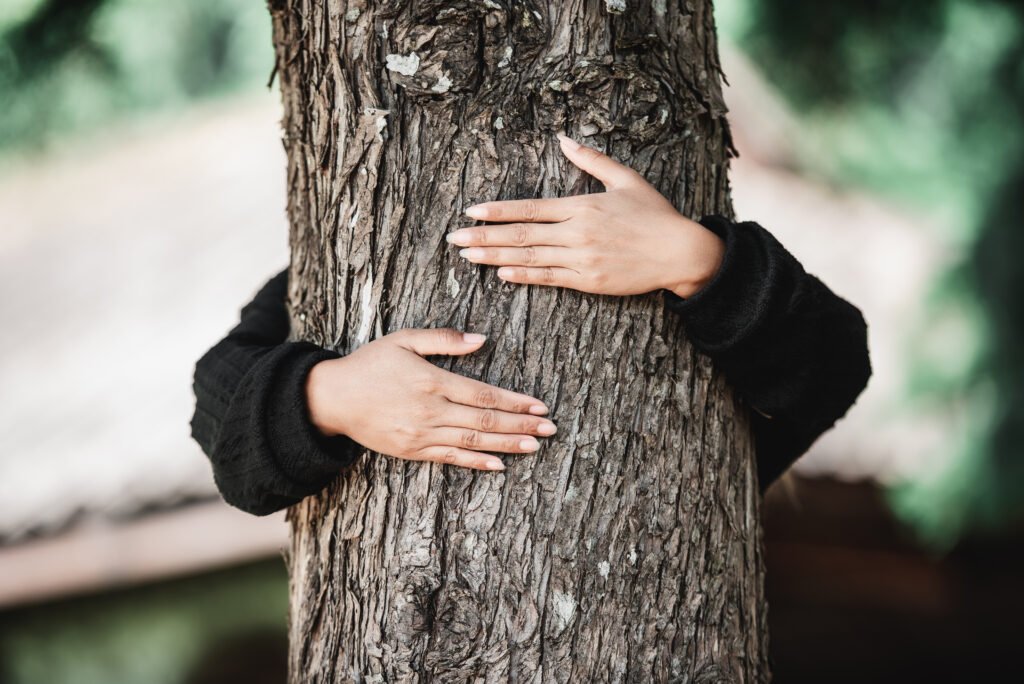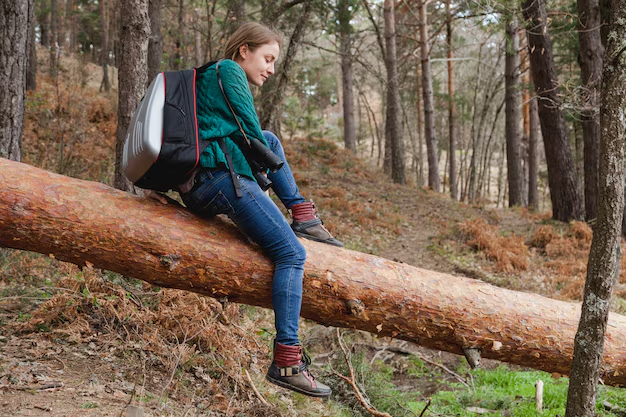In today’s fast-paced, screen-dominated world, slowing down and reconnecting with nature feels like a luxury—but it’s actually a necessity. One practice gaining popularity across the globe is forest bathing, also known as Shinrin-yoku in Japan. Contrary to what the name suggests, it’s not about swimming in the woods; it’s about immersing oneself in the sights, sounds, and scents of the forest. By simply spending mindful time among trees, people are discovering a natural remedy for stress, anxiety, and mental fatigue.
The best part? Forest bathing doesn’t require special equipment, a gym membership, or even a long weekend away—it can happen in a nearby park or even your own garden. As John Muir once said, “In every walk with nature, one receives far more than he seeks.” This timeless truth perfectly captures the mental health magic of forest immersion.

What Is Forest Bathing and How Does It Work?
Forest bathing originated in Japan during the 1980s as part of a public health initiative to reduce stress and improve well-being. The practice encourages individuals to mindfully engage with their surroundings—feeling the texture of leaves, listening to birdsong, and breathing in the earthy aroma of the forest floor.
Scientific studies have shown that forest bathing can lower cortisol levels, reduce blood pressure, and improve overall mood. This effect isn’t just psychological—plants release phytoncides, natural compounds that boost the immune system and enhance relaxation. For those dealing with digital overload, it can be as transformative as a digital detox (learn more here).

Mental Health Benefits of Forest Bathing
The mental health benefits of forest bathing go beyond “feeling good” after a walk. Here’s a closer look at how nature immersion impacts the mind:
| Benefit | How It Helps |
| Reduces Stress | Lowers cortisol levels, easing tension and improving emotional balance. |
| Boosts Mood | Increases serotonin production, fighting depression and anxiety. |
| Improves Focus | Nature’s calm environment restores attention and sharpens cognitive function. |
| Enhances Creativity | Inspires fresh ideas and problem-solving skills. |
| Supports Mindfulness | Encourages present-moment awareness, reducing mental clutter. |
These benefits align with wellness practices like mindfulness meditation and even morning self-care routines, making forest bathing an ideal complement to other healthy habits.

Why Does Forest Bathing Feel So Good? (Q&A)
Q: What makes forest bathing different from just going for a walk?
A: While walking in nature is beneficial, forest bathing involves a more intentional, sensory-focused approach. Instead of treating it like exercise, participants slow down, breathe deeply, and fully absorb their surroundings.
Q: Can forest bathing be done in urban areas?
A: Absolutely. While a deep forest is ideal, any green space—like a botanical garden or city park—can offer many of the same mental health benefits.
Q: How long should a forest bathing session last?
A: Experts suggest at least 2 hours, but even 20–30 minutes a few times a week can have a measurable positive impact.
For an extra boost, pair forest bathing with simple wellness habits for all-day mental clarity.
How to Start Forest Bathing
For beginners, the thought of “mindfully walking through trees” might feel unfamiliar. Here’s a simple guide to get started:
1. Find Your Green Space – A forest, park, or even a riverside trail works.
2. Leave Distractions Behind – Switch your phone to airplane mode to avoid interruptions.
3. Engage All Senses – Notice the feel of the air, the sound of leaves, the smell of earth.
4. Move Slowly – This is not a race; walk at a pace that allows full awareness.
5. Take Breaks to Sit – Let your mind wander as you observe nature’s details.
Those already practicing mindfulness or reducing stress naturally will find forest bathing a natural extension of their lifestyle.

A Deeper Connection with Nature
Forest bathing isn’t just about temporary relaxation—it’s about rebuilding a relationship with the natural world. When people spend more time outdoors, they become more conscious of environmental preservation, leading to a ripple effect of positive change.
For anyone who spends most of the day in front of screens, the idea of unplugging might feel daunting at first. But as with any wellness habit—like morning exercises for energy—consistency makes the practice more rewarding over time.
If you’re curious about the science behind this practice, check out the research shared by the Association of Nature & Forest Therapy at https://www.natureandforesttherapy.earth.
The Science Behind the Calm
Scientists have been fascinated by the link between green spaces and mental well-being for decades. Studies show that spending time in natural settings reduces the activity in the brain’s prefrontal cortex—an area linked to overthinking and rumination. This is why forest bathing often leaves people feeling lighter and mentally clearer. Additionally, breathing in phytoncides, the essential oils released by trees, has been shown to enhance the immune system and improve sleep quality.
When combined with other healthy habits like a balanced diet rich in superfoods, forest bathing helps create a more resilient mind and body. Unlike quick fixes, this is a sustainable and side-effect-free path to mental health improvement.
How Forest Bathing Improves Mindfulness
In the hustle of daily life, people often live on autopilot—rushing from task to task without truly being present. Forest bathing interrupts that pattern. By encouraging slow, deliberate movements and sensory engagement, it naturally cultivates mindfulness.
Listening to the crunch of leaves underfoot, noticing the warmth of sunlight filtering through branches, and observing the intricate patterns of bark are all mindfulness practices in disguise. The best part? It’s more engaging than sitting in a quiet room meditating, making it easier for beginners to embrace.
If you’ve ever tried 5-minute mindfulness techniques at home, forest bathing feels like a natural upgrade.
Nature’s Role in Emotional Healing
Many people underestimate nature’s role in emotional recovery. Whether someone is going through burnout, grief, or a life transition, being in nature has a grounding effect. The gentle rhythm of the natural world—waves on a shore, wind in the trees, or birdsong at dawn—can help regulate emotions and restore a sense of safety.
For those feeling disconnected, the forest acts as a quiet companion, offering comfort without judgment. Just as laughter can be a form of healing (read about it here), nature’s embrace works in subtle, restorative ways that science is only beginning to understand.
Making Forest Bathing Part of Your Weekly Routine
The benefits of forest bathing grow stronger with consistency. Even if you can’t get to a dense forest, visiting your local park, walking a riverside trail, or simply sitting in a garden can mimic many of the same effects.
Try scheduling a “nature appointment” in your weekly planner. This could be a solo walk before work, a weekend family hike, or even a lunchtime break on a park bench. Pairing forest bathing with other wellness habits—like morning exercises for energy or healthy eating—amplifies its positive impact.

Reconnecting with Our Roots
Human beings evolved in nature, not in concrete jungles. Our ancestors spent most of their lives outdoors, closely attuned to the seasons, the sounds of wildlife, and the rhythm of the natural world. Modern life may have pulled us away from this connection, but forest bathing offers a path back.
By simply standing among trees, feeling the ground beneath the feet, and breathing deeply, a person can tap into something ancient—a reminder that we are not separate from nature but a part of it. This connection nurtures not just mental clarity but also a deeper sense of belonging in the world.

The Joy of Slowing Down
In a culture obsessed with speed and productivity, slowing down feels almost rebellious. Forest bathing is a gentle act of resistance—an intentional choice to value stillness over constant motion. It encourages the mind to wander freely, sparking moments of gratitude for small wonders: a butterfly’s wings, the rustle of leaves, the scent of pine carried by the wind.
These moments are more than pleasant—they’re healing. They allow space for reflection, emotional release, and creative inspiration, all without a single notification or deadline interrupting the peace.

A Gift to Share
Forest bathing doesn’t have to be a solitary practice. Sharing it with a friend, family member, or even a child can deepen the experience. Conversations often become more meaningful in natural surroundings, and the shared silence can be just as bonding as words.
Introducing others to this practice can create lasting memories and even inspire a collective commitment to protect the environment. In this way, every forest bathing session becomes both a personal act of self-care and a small step toward a greener future.

Closing Words: Nature’s Gentle Embrace
Life will always have its storms—moments of stress, uncertainty, and change. But in the forest, there’s a reminder that storms pass, seasons shift, and new growth always follows. The sunlight dances between the leaves, the wind hums its ancient melody, and the earth holds you steady beneath your feet.
Forest bathing is not just an escape—it’s a homecoming. A place where the heart feels lighter, the mind feels clearer, and the soul feels quietly renewed. And when one finally steps back into the world beyond the trees, they carry with them the forest’s whisper: “You belong here.”
